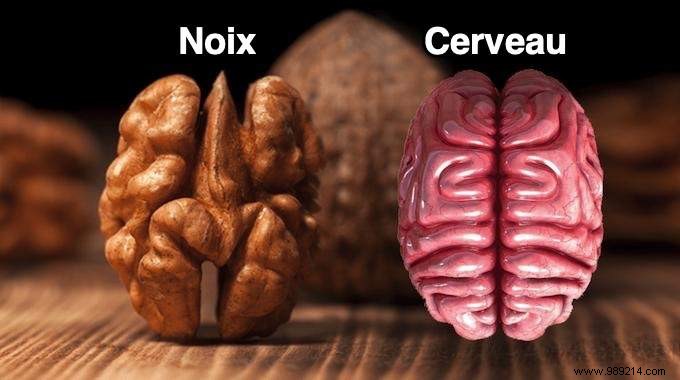
Do you know the theory of signatures?
This is a special way of observing medicinal plants.
According to this approach, the shape of the plants is a clue to know their benefits.
This idea was widespread in Europe.
It had a certain success from antiquity to the 18th century.
Yes, because some foods really resemble the organs they heal.
Handy for remembering what to eat!
Now let's discover 8 foods that heal the organs they look like. Watch:
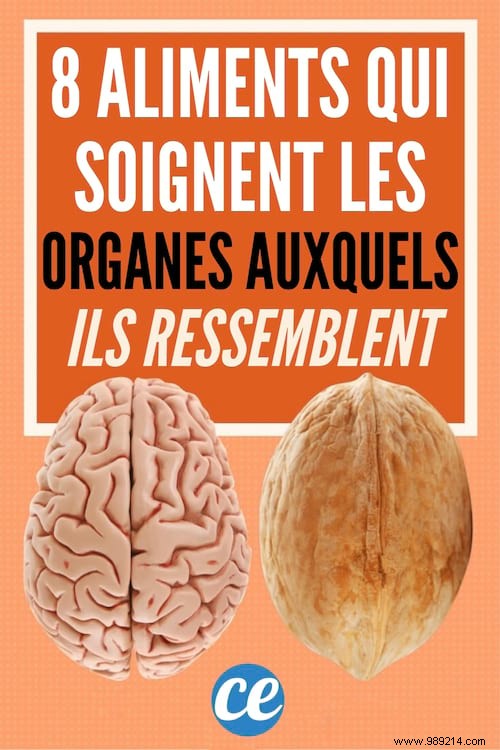

Split a nut in half. Remove its shell. Look at it.
And there, I'm sure you've already thought about this.
A walnut kernel resembles the 2 hemispheres of our brain.
The most surprising...
It is that according to a scientific study, walnuts have a beneficial effect on our brain.
Consuming it regularly improves our memory and cognitive abilities.
It preserves our neurons, because it protects them from oxidative stress.
It must be said that the nut is a dry fruit rich in phytochemicals. It also contains polyunsaturated fatty acids.
And that, our brain loves. Why ? Because it allows it to limit cell oxidation.
And it decreases the risk of inflammation.
But that's not all!
Another study showed the role of polyphenolic compounds contained in the walnut.
These facilitate the creation of new neurons (neurogenesis). It promotes the development of links between neurons.
In general, it is recommended to eat nuts to reduce the risk of degenerative diseases.
This is the case, for example, of diseases such as Alzheimer's.
In addition, eating nuts helps improve your mental health.
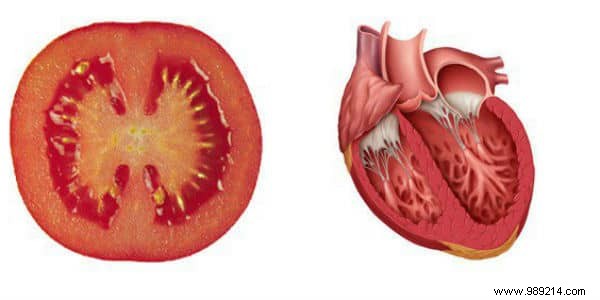
Now cut a tomato in half.
Don't you think your tomato half looks like the cavities of the chambers of the heart?
Tomatoes are packed with lycopene.
It is the pigment that gives this beautiful color to tomatoes.
It has antioxidant properties.
As a Finnish study shows, lycopene decreases the risk of stroke and ischemic stroke.
This means that it limits the risk of an organ not getting enough blood.
Good news!
You may know that vitamins lose some of their properties when cooked.
On the contrary, the virtues of the lycopene contained in tomatoes increase when they are cooked.
Do not hesitate to prepare good stuffed tomatoes!
And remember to flavor your cooked tomatoes with a drizzle of olive oil which contains polyunsaturated fats.
You will further enhance its benefits.
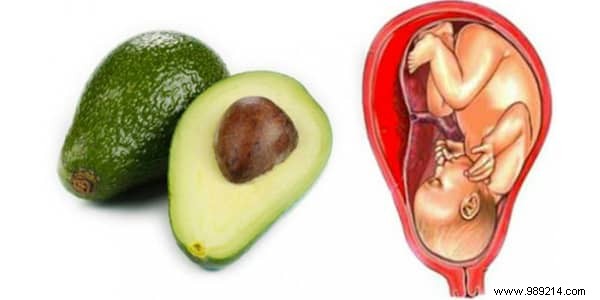
The avocado has long had a bad reputation, especially in the context of diets.
That's a shame ! Because this fruit is excellent for your health...
Especially during pregnancy.
By the way, take a good look.
What does its elongated shape, like an upside-down pear, remind you of?
To a womb!
It is therefore no coincidence that it is so good for the health of pregnant women.
The vitamin B9 (folate) it contains is essential for the proper development of the fetus.
It is folate acid (or vitamin B9) that helps prevent fetal malformations.
The only problem is that our body does not make it.
Fortunately, the avocado contains some to stock up on!
Avocado is also rich in vitamin K.
This impacts coagulation, bone mineralization and cell growth.
Vitamin K also has anti-inflammatory properties that protect our heart.
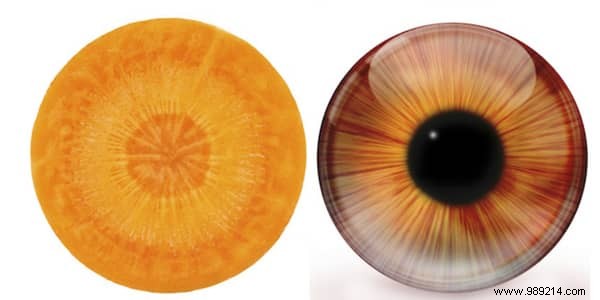
Cut slices from a carrot.
What do you notice ? Its fibers resemble the iris of the eye.
And yes ! Carrots don't just make you lovable!
They are also a concentrate of vitamins and antioxidants. It contains the beta-carotene responsible for its beautiful orange color.
When consumed, beta-carotene becomes vitamin A.
This vitamin is vital for the retina and its optimal functioning.
Vitamin A turns into photosensitive pigment.
Thanks to this process, our eyes are able to adapt to light and night vision.
According to studies, the risk of macular degeneration can be limited by a diet rich in vitamin A and beta-carotene.
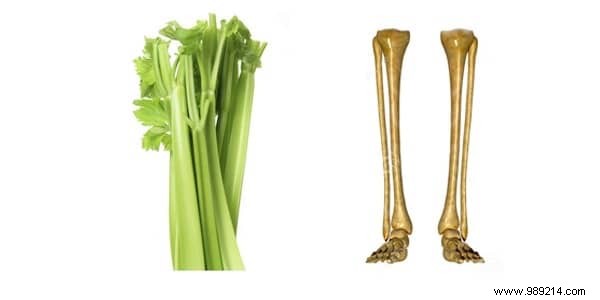
With these tall stalks, celery looks like bones. Celery is a water-rich vegetable.
There are minerals such as silica.
This mineral has an essential role for the production and renewal of mucous membranes. It is found on the articular and connective tissues of the bones.
Without a good supply of silicon, our bones are weakened. Why?
Because this trace element allows minerals such as calcium or magnesium to bind.
If you don't like celery too much, don't panic.
Silica is also found in other foods.
Eat cereals, legumes or fruits with pectin (banana, apple, grapes, cherries).
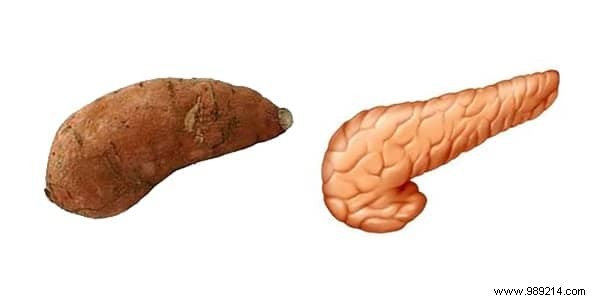
Sweet potato contributes to the proper functioning of the pancreas.
Normal, its shape is similar to that of the pancreas!
In particular, it helps to regulate the level of sugar in the blood.
It is therefore an interesting vegetable for diabetics.
Because it facilitates the regulation of the glycemic index.
Just like the carrot, it is rich in beta-carotene, a very active antioxidant.
It thus protects the tissues of the body including the pancreas.
Antioxidants also play an important role in the prevention of pancreatic cancer.
It also prevents cell aging.
Tomato, watermelon, fresh apricot, pink grapefruit or blood orange...
All of them are rich in beta-carotene and have a similar role.
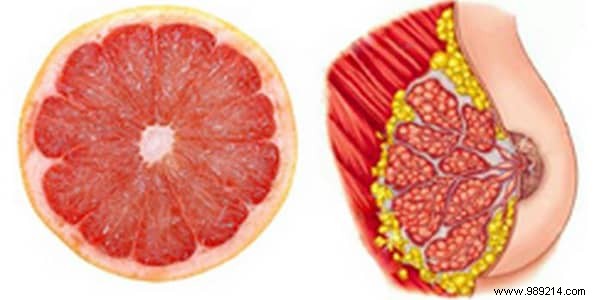
Cut a grapefruit in half.
This citrus fruit resembles the mammary gland found in women's breasts.
It's the same for orange.
And as luck would have it, oranges and grapefruit have a beneficial effect on breast health.
It also improves the circulation of the lymph in the lymphatic vessels.
Limonoids contain phytochemicals.
And that's good...
Because we find them in particular in grapefruits!
Their anti-cancer action has been demonstrated in experiments conducted in vitro and on animals.
They could participate in the fight against the development of cancer cells.
The other good news is that citrus fruits also contain flavonoids.
Numerous studies have demonstrated their role in the fight against cancer, including breast cancer.
Not only do they limit the development of cancer cells in mice...
But also in women's breast cells.

Our lungs are each made up of a lobe.
This lobe contains kinds of small pockets, the alveoli. The bronchioles connect them to each other.
These alveoli allow the circulation of oxygen between the lungs and the blood.
And they look like tiny bunches of grapes.
Grape seeds contain an antioxidant from the same family as flavonoids:proanthocyanidin.
It acts on asthma and chronic bronchitis.
Regular consumption of grapes may well reduce the risk of developing cancer.
And in the first place, that of the lungs in particular.
In general, the consumption of fresh fruit reduces the risk of cancer.
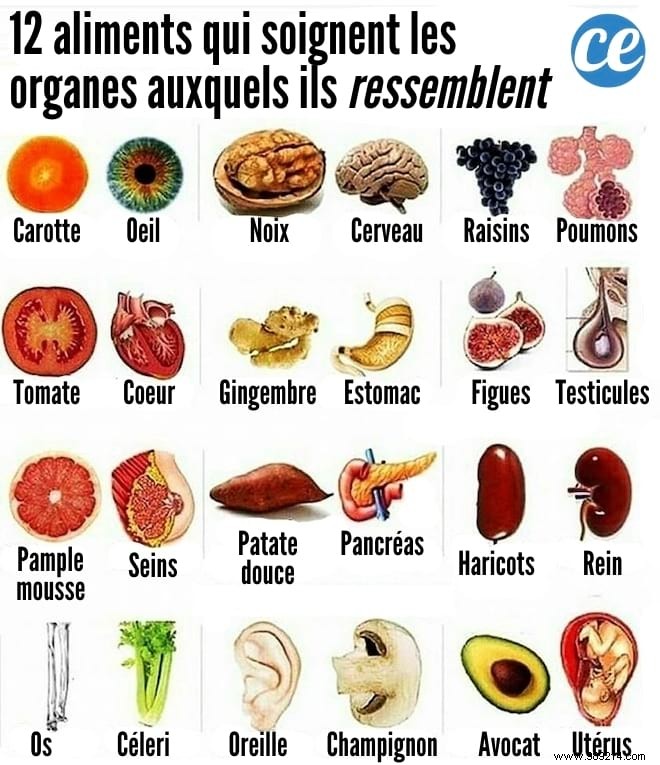
Other plants, fruits and vegetables look like human organs.
We think of mushrooms and ears, ginger and stomach, fig seeds and sperm,
Or kidneys and olives, pulmonium and lungs, horsetail stalk and spine.